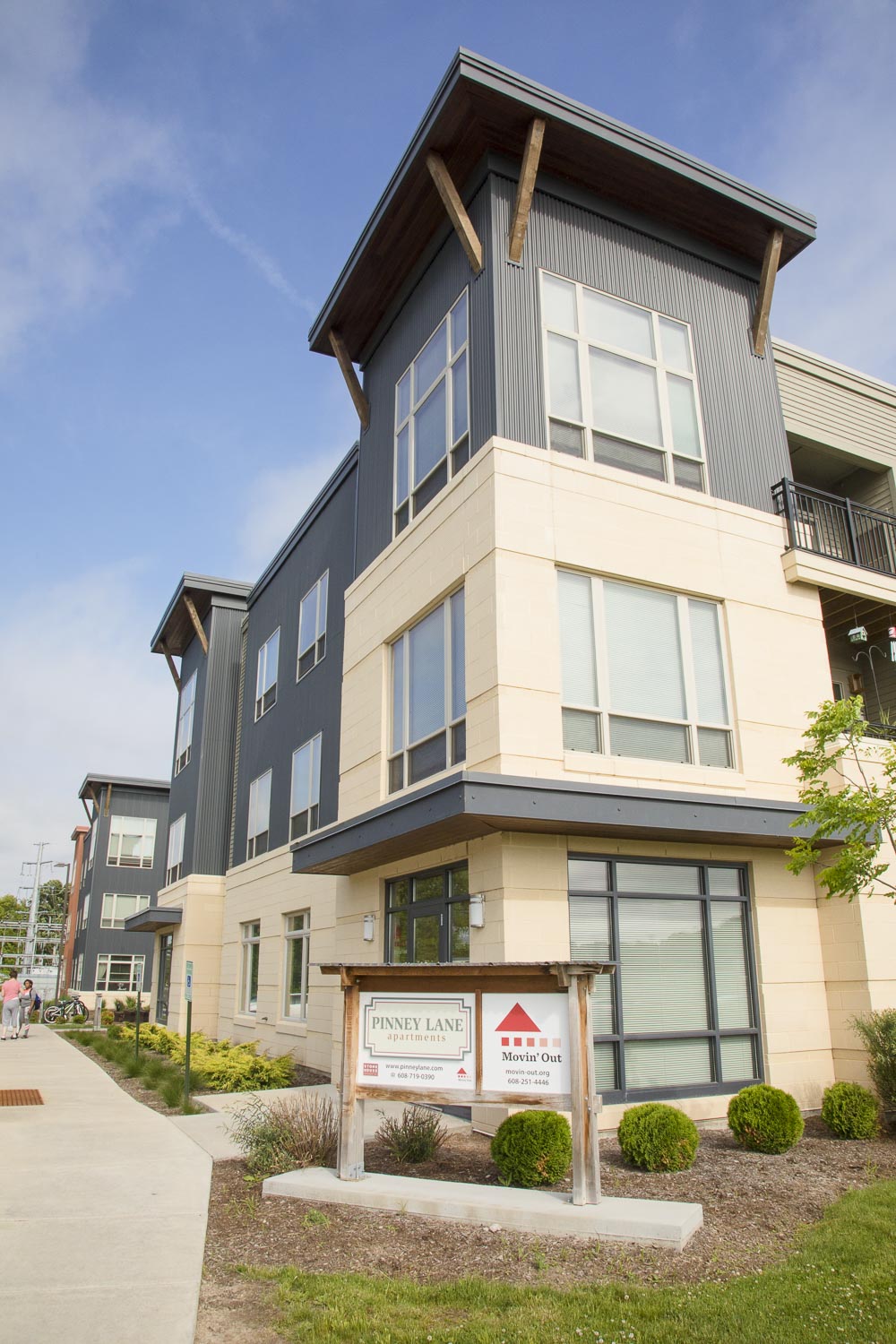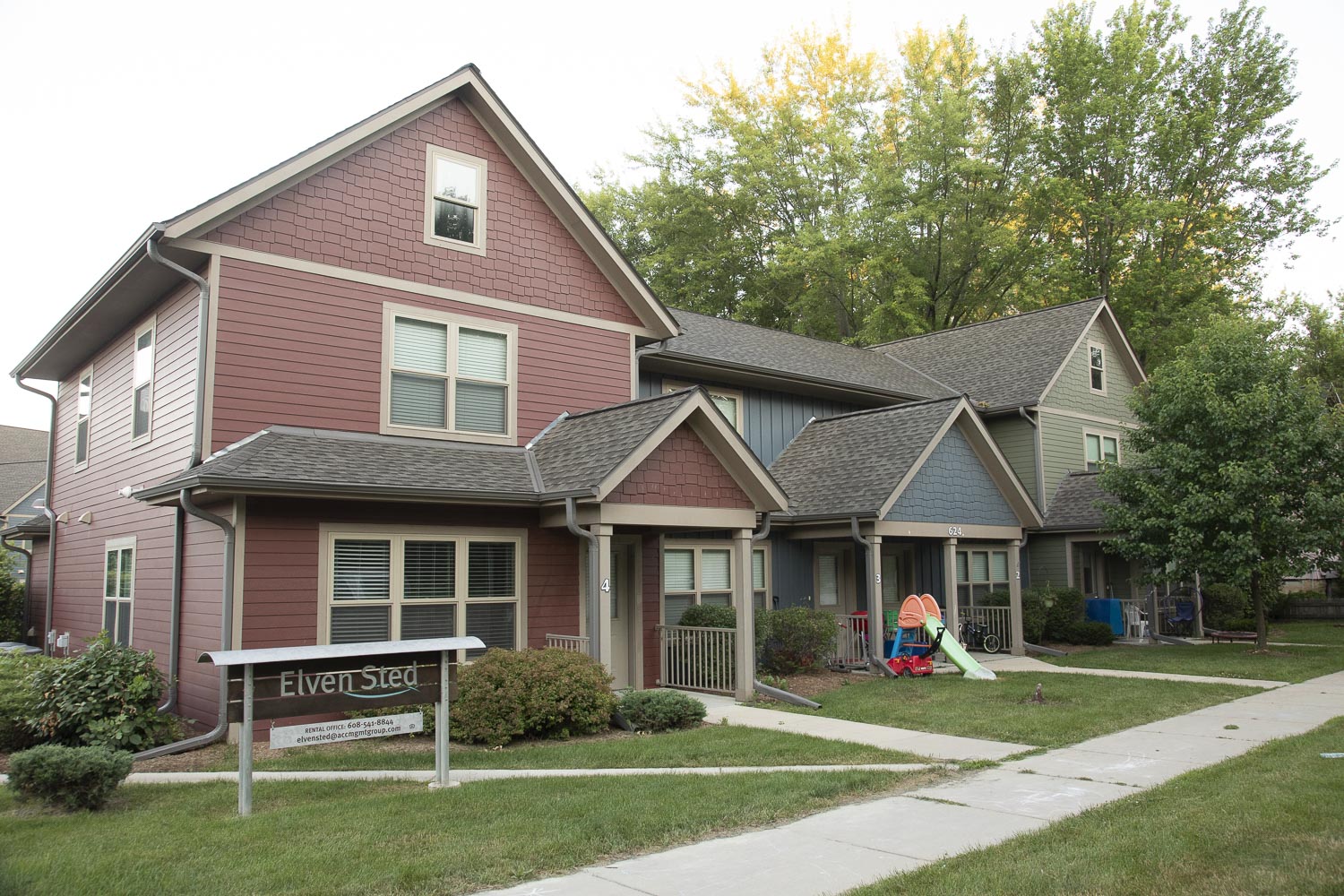

Movin’ Out develops new, high-quality rental housing
In order to provide an important community-integrated housing option for the people we serve, Movin’ Out develops new multi-family housing with most units affordable for low- to moderate-income households. About 25% of the units are designed to be both the most affordable and the most accessible. These are affirmatively marketed to households that include members who qualify for long-term care due to their disabilities.
We have many decades of combined experience partnering with developers and working on our own to develop multi-family housing. To date, Movin’ Out has helped create nearly 1,600 units of affordable rental housing in Madison, Milwaukee, and communities throughout Wisconsin.
Select Projects
As a proven non-profit housing developer, Movin’ Out has access to subsidies, favorable financing, grants, and a competitive status in securing low-income housing tax credits. This financing advantage allows Movin’ Out to produce high quality rental housing with some units reserved for very low income households with a member with disabilities. These units are always integrated throughout developments that may also feature workforce or market rate apartments. We do not create housing that clusters people with disabilities in any way.
Movin’ Out’s real estate development team combines success in housing development, expertise in accessibility modifications and adaptive technologies, and familiarity and connection with long-term support managed care systems. We partner with Family Care managed care and IRIS self-directed care—and the supported living agencies they collaborate with—to assist people who are eligible for those services to navigate the rental application process.
People with a wide range of disabilities—even those with substantial and complicated disabilities—can achieve success and stability as Movin’ Out tenants. The apartments we develop are not licensed or certified as residential assisted living facilities—they are ordinary homes secured by ordinary leases held by the tenants who are the head of the household. They negotiate with their long-term care provider to secure the supportive services they need.
Why partner with Movin’ Out?
Mission-aligned community organizations, real estate developers and investors, property management businesses, Realtors, financial institutions, municipalities, foundations, and long-term care organizations have clear advantages in partnering with Movin’ Out including:
Access to a strong market of stable, high quality tenants
Extensive experience in securing housing subsidies (HOME, AHP, CDBG, others). Movin’ Out is certified as a Community Housing Development Organization (CHDO).
Staff with decades of affordable housing development experience, including Low-Income Housing Tax Credit (LIHTC) projects and HUD Section 811 projects.
Long-standing working relationships with long-term care organizations including Wisconsin Family Care and IRIS managed care agencies, and experience establishing and providing ongoing coordination for project supportive services.
To learn more, email Denise Alexander.
Development partners
ACC Management Group, Inc.
Antach Management Corporation
Associated Bank
Baker Tilly Virchow Krause
BMO Harris Bank N.A.
Cedar Corporation
Choice Bank
City Real Estate Advisors, Inc.
Commonwealth Companies
Dane County CDBG Commission
Dane County Housing Authority
Disability Opportunity Fund
Enterprise Community Partners
Federal Home Loan Bank of Chicago
Foley & Lardner LLP
Forward Community Investments
General Capital Group
HOME Consortium
Horizon Development Group
HUD Section 811
IFF
JFS Housing
Keystone Development
Madison Community Development
Milwaukee County Housing Division
Mirus Partners, Inc.
MSP Real Estate
National Equity Fund
Oakbrook Corporation
Raymond James Tax Credit Funds, Inc.
Reinhart Boerner Van Duren, SC
Rule Enterprises
Settlers Bank
Stone House Development, Inc.
SVA Certified Public Accountants
City of Waterloo
WIRE Capital Group LLC
Wisconsin Division of Housing
Wisconsin Housing & Economic Development Authority
WNC
Development highlights
Pinney Lane Apartments | Madison, Wisconsin
Pinney Lane Apartments is a joint venture between Movin’ Out and Stone House Development. It is a 70 unit multifamily mixed-use rental apartment building located on the East side of the city of Madison, Wisconsin. The project consists of 1, 2, and 3 bedroom apartments, underground parking, community and common space and 3,000 square feet of commercial office space that is occupied by Movin’ Out as its corporate headquarters. This project is part of a 28-acre redevelopment effort on former industrial land. The balance of the development site is being carried out by other development entities, however the site was master planned and platted by the City. The larger project will include a new public library, senior housing, and 50 single family homes. Pinney Lane was completed in March 2016 and is fully leased. The project is Wisconsin Green Built Home Certified, which requires meeting a high level of green building and energy efficiency standards. Eighteen of the units are marketed to households that include a family member with a permanent disability and/or a military veteran, and the balance of the units are occupied by other working families in the community.








Elven Sted Apartments | Stoughton, Wisconsin
Elven Sted (River Place in Norwegian) is a 33-unit multi-family rental development located four blocks from downtown Stoughton, Wisconsin, developed by Movin’ Out as part of the city’s downtown redevelopment plan. Movin’ Out worked with the city to plan and develop the project with local, state, and federal financing support. The project is Wisconsin Green Built Home Certified which requires meeting a high level of green building and energy efficiency standards. Elven Sted, completed in September 2011, was fully occupied the day it opened and remains so today. The project is a combination of 1, 2 and 3 bedroom apartments. Eleven of the units are marketed to households that include a family member with a permanent disability and the balance of the units are occupied by other working families in the community.






